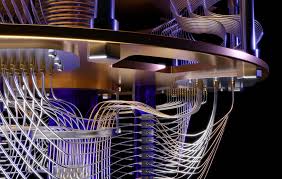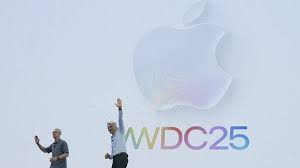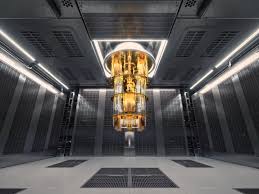Technology
Featured
The Quantum Threat: A High-Stakes Race to Defend Global Data from an Impending Code-Breaking Crisis
Editor
Jun 20, 2025
min read
3 views

In the world of cybersecurity, a theoretical doomsday has a name: 'Q-Day.' It is the moment a sufficiently powerful quantum computer becomes capable of shattering the encryption standards that protect virtually all of our digital lives—from banking and government secrets to private communications and critical infrastructure. As of mid-2025, while Q-Day has not yet arrived, the quantum threat has moved from the realm of academic theory to an urgent national security priority. A silent, high-stakes race is now underway, pitting the rapid advancements in quantum computing against the global effort to develop and deploy a new generation of quantum-resistant cryptography.
The danger stems from the fundamental principles of quantum mechanics. Unlike classical computers that process information in bits (0s or 1s), quantum computers use qubits, which can exist in a superposition of both states simultaneously. This property, combined with quantum entanglement, will allow them to solve certain mathematical problems exponentially faster than any classical computer. Unfortunately, the security of our most widely used public-key encryption, like RSA and Elliptic Curve Cryptography (ECC), relies on the difficulty of these exact types of problems, such as factoring large numbers. For a large-scale quantum computer, breaking this encryption will be trivial.
This creates a chilling vulnerability known as the 'harvest now, decrypt later' attack. Adversaries, including state-sponsored actors, are widely believed to be siphoning and storing massive amounts of encrypted data today. While they cannot read it now, they are betting on the future arrival of a quantum computer that can decrypt this trove of historical data. "Every piece of sensitive data, every state secret, every financial transaction that is being transmitted today is potentially vulnerable," said Dr. Evelyn Reed, a cryptographer at a leading cybersecurity firm. "The shelf-life of secrets is now contingent on the timeline of quantum development. This is not a future problem; it is a present-day vulnerability."
In response, the world's cybersecurity agencies and standards bodies are in a full-sprint transition. The most significant effort is being led by the U.S. National Institute of Standards and Technology (NIST), which, after a multi-year competition, has selected a portfolio of Post-Quantum Cryptography (PQC) algorithms. These new standards, such as CRYSTALS-Kyber for key encapsulation and CRYSTALS-Dilithium for digital signatures, are based on different mathematical problems believed to be resistant to attack from both classical and quantum computers. The first official draft standards were released in 2023 and are expected to be finalized soon, triggering a massive global migration effort.
The scale of this transition is staggering, arguably the largest and most critical cryptographic upgrade in the history of computing. Every piece of software and hardware that uses public-key encryption—from web servers and VPNs to smart cards and IoT devices—will need to be updated. National cybersecurity agencies are issuing urgent guidance. In March 2025, the UK's National Cyber Security Centre (NCSC) unveiled a multi-phase roadmap urging organizations to begin planning their migration immediately, with a goal of completing the transition for all systems by 2035. The U.S. Cybersecurity and Infrastructure Security Agency (CISA) has issued similar directives for federal agencies.
However, the path to a quantum-safe future is fraught with challenges. The new PQC algorithms are more complex and often require more computational resources and bandwidth than their predecessors. Integrating them into legacy systems will be difficult and costly. Furthermore, there is the challenge of 'crypto-agility'—the ability of a system to switch between different cryptographic algorithms. Experts are urging organizations to build crypto-agile systems now, allowing them to adapt as PQC standards evolve and new threats emerge.
Parallel to the development of PQC is another technology: Quantum Key Distribution (QKD). QKD uses the principles of quantum mechanics to securely distribute encryption keys, with the unique property that any attempt to eavesdrop on the key exchange would be instantly detected. While QKD offers a provably secure method of key exchange, it is currently limited by distance and requires specialized hardware, making it suitable for specific high-security applications rather than as a wholesale replacement for public-key cryptography.
As of 2025, the world stands at a cryptographic crossroads. The quiet hum of quantum computers in research labs is a ticking clock for global security. The race to implement PQC is not merely a technical upgrade; it is a fundamental defense of our digital society against a future where no secret is safe. The success of this transition will depend on a coordinated effort between governments, industry, and academia to navigate the immense technical and logistical challenges before Q-Day becomes a reality.
Editor
League Manager Editorial Team







Leave a Comment